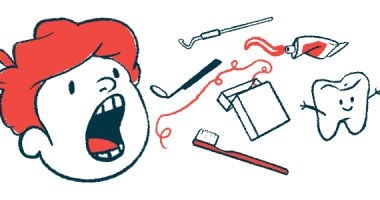Nonmedical DEB Costs, Including Caregiving, Add Up, Study Shows
Research found European patients paid an average of more than €50,000 annually

Many patients with dystrophic epidermolysis bullosa (DEB) need the help of a caregiver at home, and this adds up to their direct costs, which are higher than the mean costs of all patients with epidermolysis bullosa, according to a study covering five countries in Europe.
On average, the direct nonmedical costs, which include caregiver services, were roughly five times as high as the direct medical costs of healthcare.
In a summary of all costs, including indirect costs not directly related to the disease, each patient spent on average more than €50,000 (about $49,000) per year.
There is “a substantial socioeconomic burden for DEB in Europe, attributable mostly to high direct non-medical costs, with the majority of patients requiring support from caregivers at home,” the researchers wrote.
The study, “Understanding the socioeconomic costs of dystrophic epidermolysis bullosa in Europe: a costing and health-related quality of life study,” was published in the Orphanet Journal of Rare Diseases.
Epidermolysis bullosa causes the skin to become very fragile and blister easily. In patients with DEB, a type of epidermolysis bullosa, this may happen in response to minor trauma, or even just rubbing or scratching.
Some patients have mild symptoms. Blistering may occur in the hands, feet, arms, and legs, but more severe blistering can affect the mouth, vocal cords, esophagus, and anus. The blistering can also make it hard to swallow, cause vision problems, and put patients at risk of developing skin cancer.
Disease’s financial burden
While these symptoms take a toll on the quality of life of patients and their caregivers alike, they also bring about costs. To get an idea of the burden placed on patients and their caregivers, the researchers drew on data from BURQOL-RD, a survey on the socioeconomic burden and health-related quality of life in patients with rare diseases in Europe.
The study included 91 patients with a diagnosis of DEB: 32 were from Spain, 26 from Italy, 15 from the U.K., 14 from France, and four from Germany. Their average age was 23 years and more than half (54.9%) were adults. Most (76.9%) had generalized DEB and 23.1% had a milder form of the disease.
Of the 91 patients, 55 (60.4%) required the help of a caregiver. The average age of the caregivers was 43.3 years, and most (83.6%) were women. More than half (58.2%) were a patient’s parents, and about one-quarter (25.5%) were other relatives.
The caregivers averaged 69 hours per week taking care of patients. The amount of time spent ranged from 27.8 hours per week in France to 108.8 hours per week in Germany.
On average, the costs per patient totaled €53,359 (about $52,000) per year, ranging from €18,783 ($18,300) in France to €79,405 ($77,430) in Germany, which was higher than the average of €31,390 ($30,610) estimated for the overall population of patients with epidermolysis bullosa in eight European countries.
Patients who were less able to carry out daily tasks spent more than six times as much as those who required minimal to no help with daily tasks (€74,749 vs. €11,241). Moreover, the yearly costs for the children more than doubled those for the adults (€69,559 vs. €33,211).
Direct medical costs, which include factors such as medical tests, visits to the doctor and admissions to the hospital averaged €8,357 (about $8,125) per year. These costs accounted for 15.7% of the total costs.
Other direct (nonmedical) costs, such as those associated with social health and caregiver services, averaged €41,353 ($40,320) per year and up to €57,000 (nearly $55,500) per year in Germany. These accounted for 77.5% of the total costs.
There were also indirect costs related to low productivity in the workplace and early retirement. On average, the indirect costs were estimated at €3,649 ($3,550) per year and up to €9,930 (around $9,660) in the U.K. They represent the smallest share of the total costs (6.8%).
Quality of life measurements
Health-related quality of life was measured using the EQ-5D-3L questionnaire, which provides a generic measure of health status. Its score ranges from zero (death) to one (perfect health). For the adults, the EQ-5D score averaged 0.456, ranging from 0.304 in the U.K. to 0.541 in Germany.
All patients (children and adults) also recorded their health status on a visual analog scale, which ranges from zero (the worst imaginable health status) to 100 (the best imaginable health status). On average, the score was 61.9.
Caregivers also reported their health status. Their average EQ-5D score was 0.749, and that of the visual analog scale was 74.3. When asked about the extent to which they perceived their burden as a result of caring for a patient with DEB using the Zarit Burden Interview, they reported moderate burden. The Zarit Burden Interview score ranges from zero to 88, with higher scores indicating greater burden, and it averaged 31 in the study.
“This study adds to the existing cost-of-illness literature of rare diseases by focusing on the socioeconomic implications of DEB,” the researchers wrote. It also “confirms earlier cost-of-illness evidence pointing towards a substantial negative impact on patient and caregiver [health-related quality of life], in addition to economic implications which are predominantly attributable to high direct non-medical costs,” they concluded.






